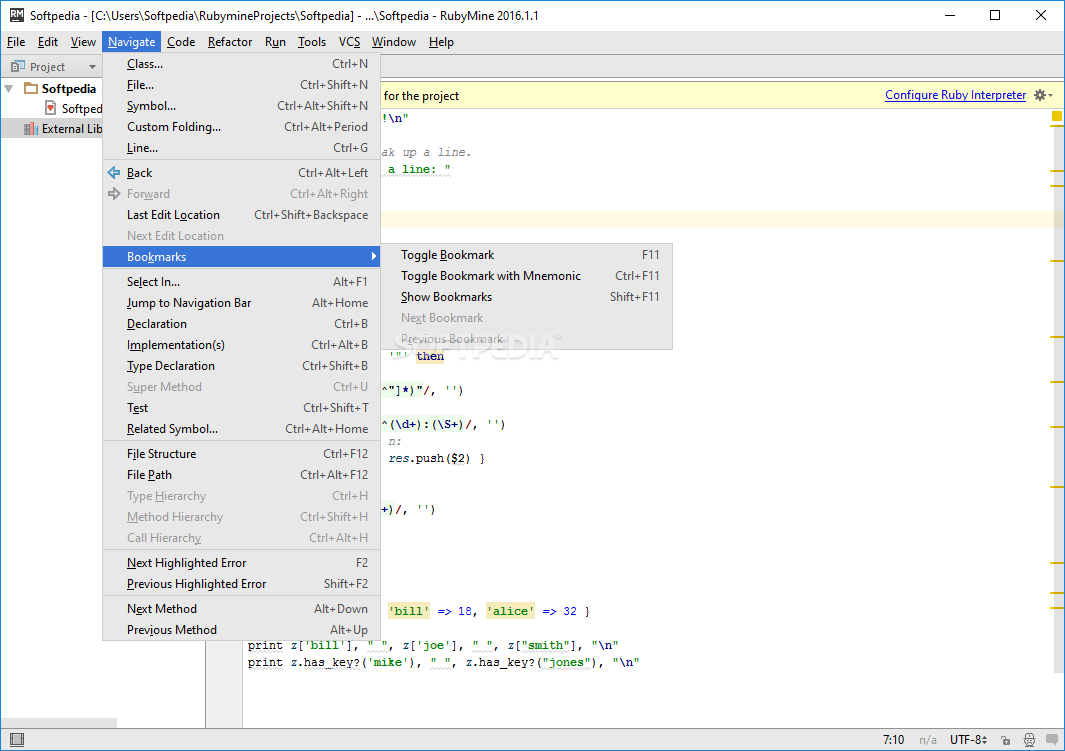
On the toolbar, click, and choose Remote Interpreter or Version Manager: To configure a remote Ruby interpreter, follow these steps: Then, you can add the remote Ruby interpreter in RubyMine and run, debug, and test your application in an isolated environment right from the IDE. You can prepare the desired Ruby/Rails setup in a remote environment using Docker Compose, Vagrant box, or WSL.
#Rubymine 7 windows#
Run, debug, and test your application on the same operating system you deploy.ĭevelop Linux-deployed applications using the Windows Subsystem for Linux. This can be useful in multiple cases, for example, if you want to:ĭevelop in an isolated environment to avoid impacting your local machine configuration. Various remote development tools, such as Docker, Vagrant, or Windows Subsystem for Linux (WSL), allow you to use an isolated environment for developing your applications. Note that RubyMine supports auto-switching an interpreter/gemset if your project has the. (Optional) If necessary, click the Rollback button in the popup that informs about the changed SDK. In the invoked popup, start typing rvm use or rbenv shell, select the required interpreter and press Enter. If you use RVM or rbenv to manage local Ruby SDKs, you can quickly set the required interpreter using Run Anything: Select the added interpreter and click OK in the Settings/Preferences dialog. If you use Shadowenv to customize your project environment, pass a path to the project directory to the shadow exec command.Įxample: shadowenv exec -dir /Users/jetbrains/sample_app. envrc file to the direnv exec command.Įxample: direnv exec /Users/jetbrains/sample_app If you use direnv to load and unload environment variables, pass a path to the directory with the. Note that the *.sh file should have at the end to allow RubyMine to pass some commands required for adding an interpreter. If you use a shell script to load environment variables, you need to provide an absolute path to this script.Įxample: /bin/bash /Users/jetbrains/sample_app/env.sh Specify the environment variable values directly. Then, configure the Custom environment in one of the following ways: In the invoked dialog, provide a path to the Ruby executable as described in Add an interpreter. In the Ruby SDK and Gems page, click the button and select Interpreter with Custom Environment: Open the Settings/Preferences dialog Ctrl+Alt+S.

To do this, you need to provide environment variable values or a path to a configuration script when adding a local interpreter. RubyMine allows you to use your custom environment for running any Ruby command from within RubyMine.


 0 kommentar(er)
0 kommentar(er)
